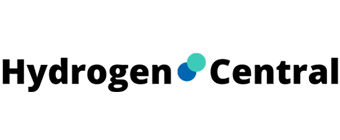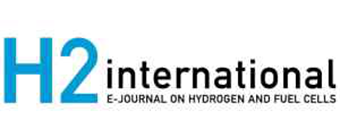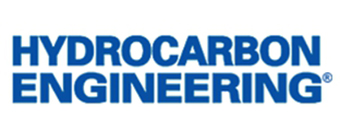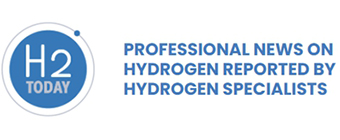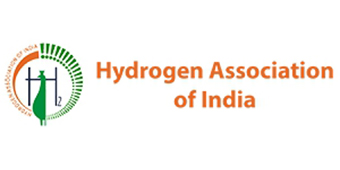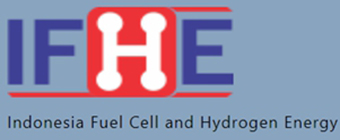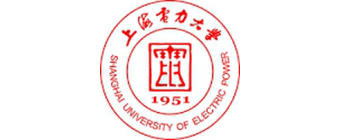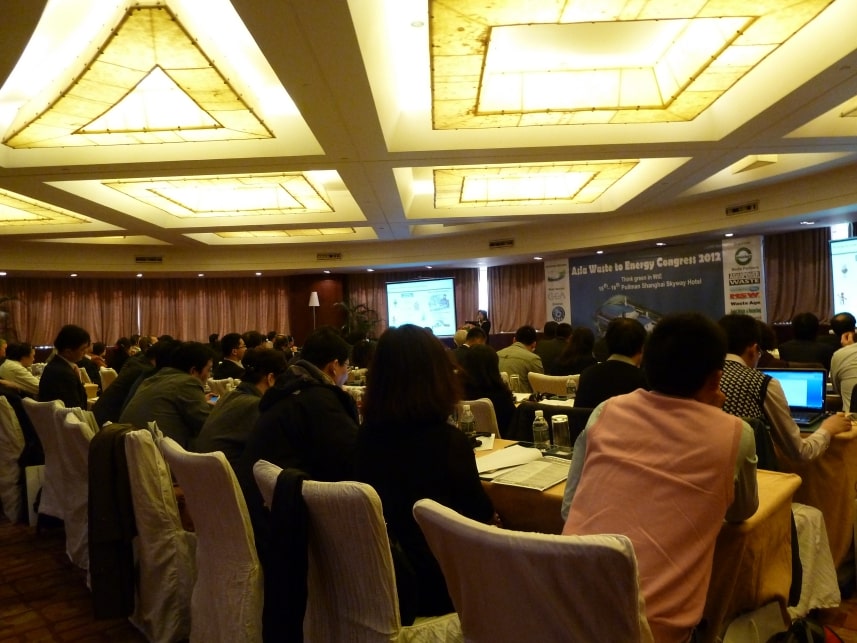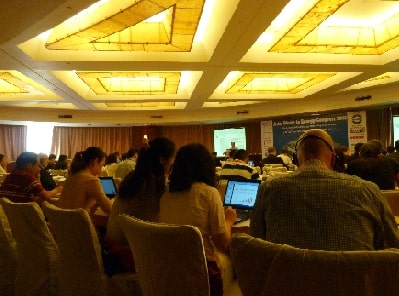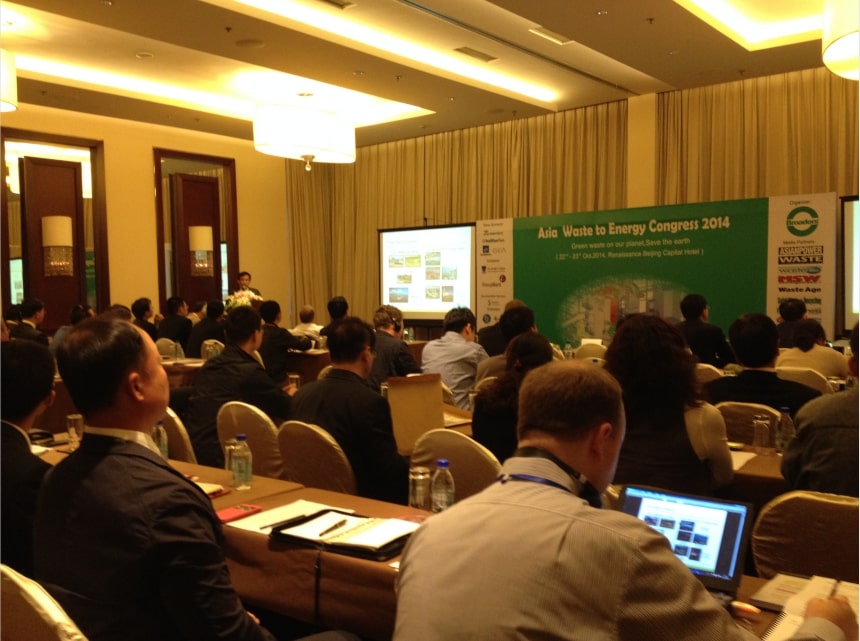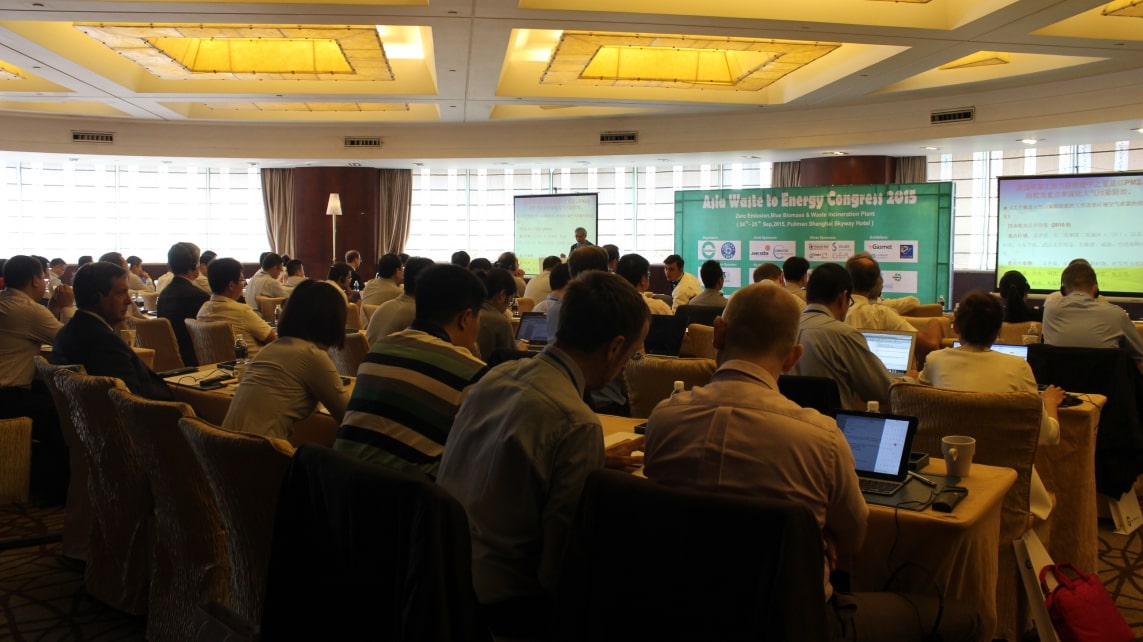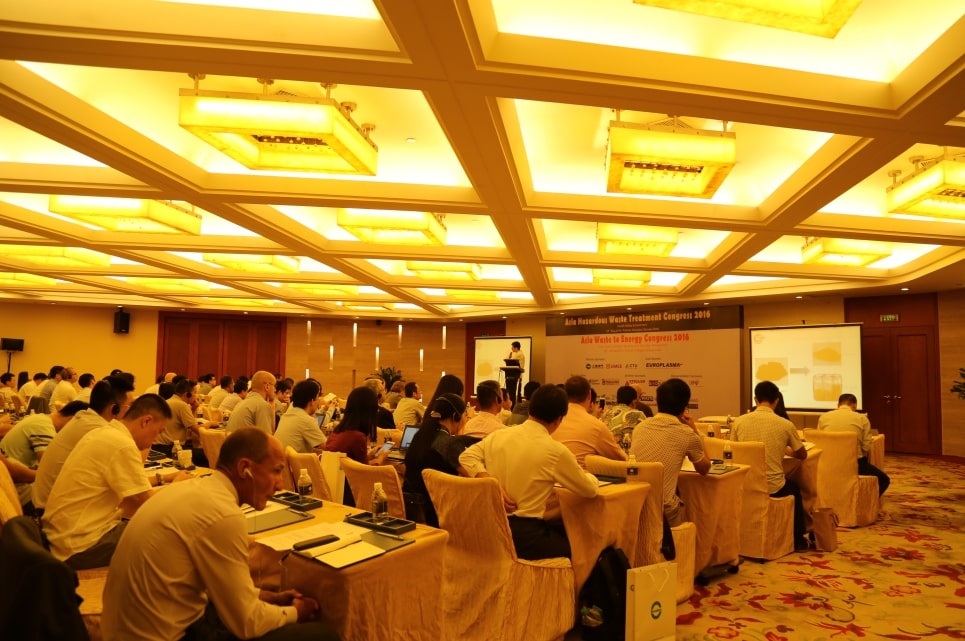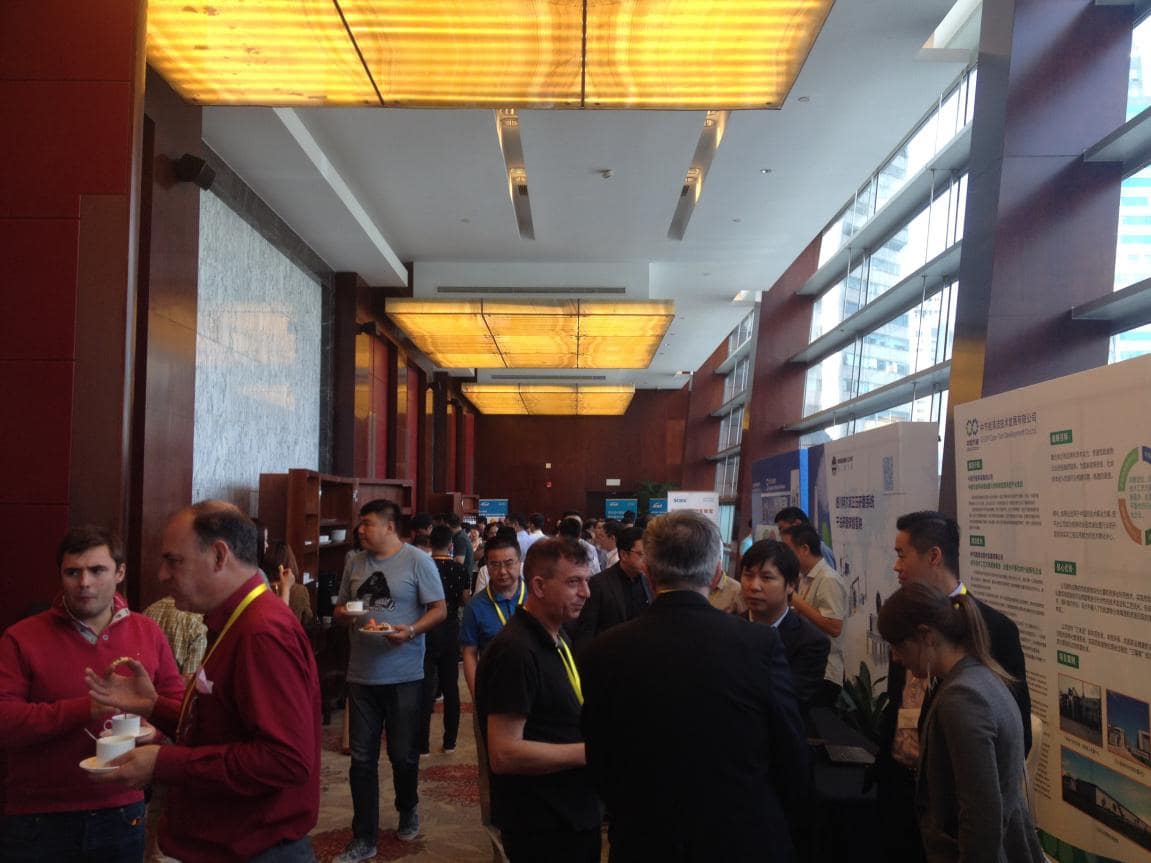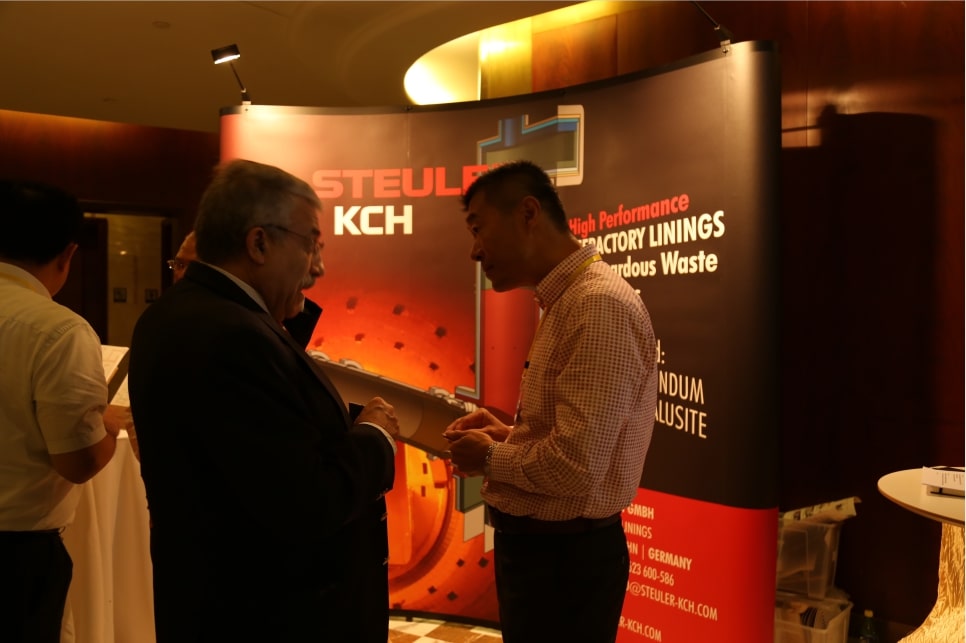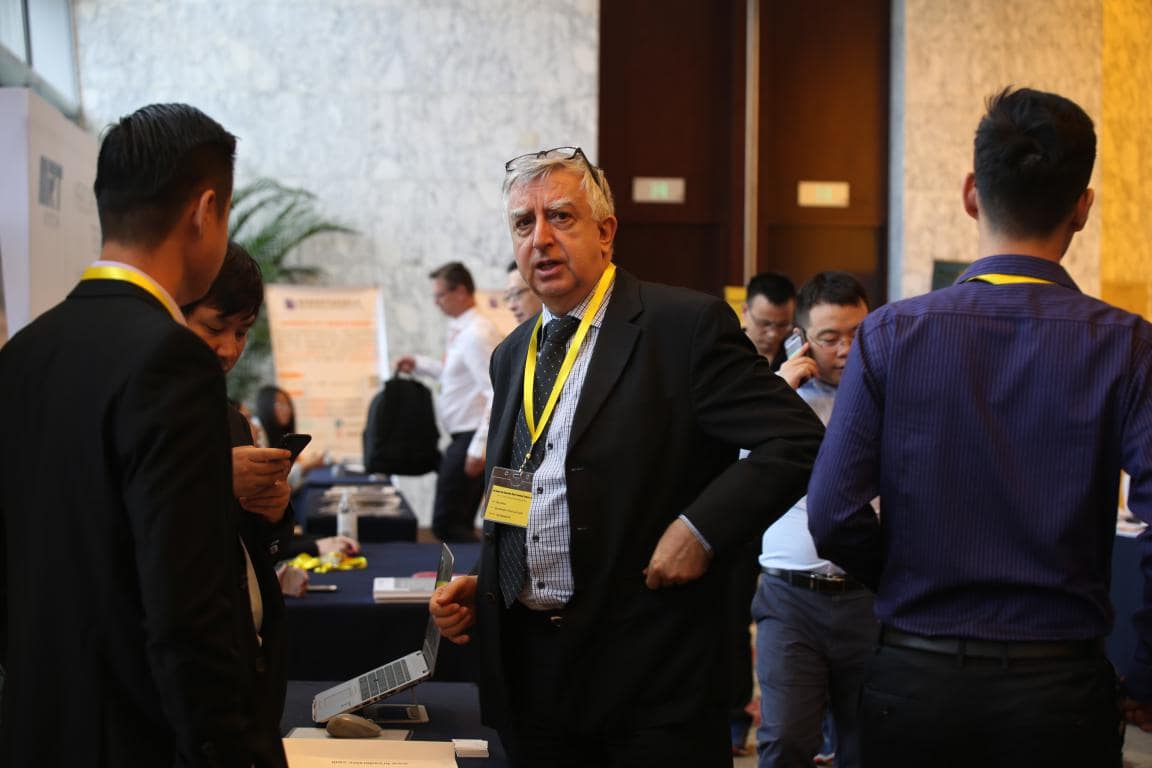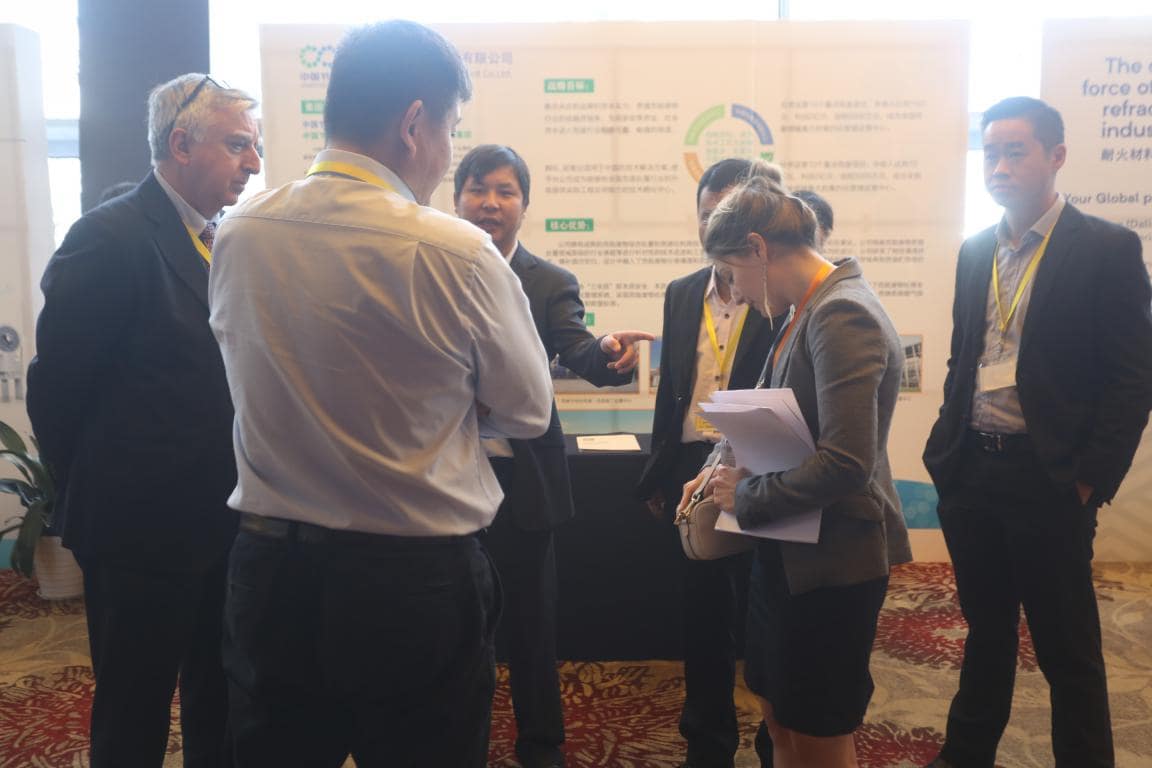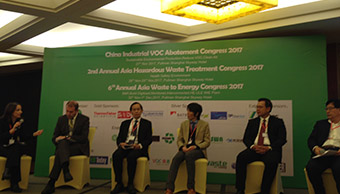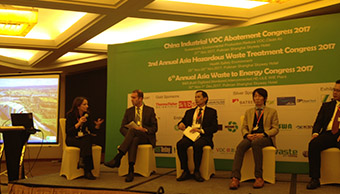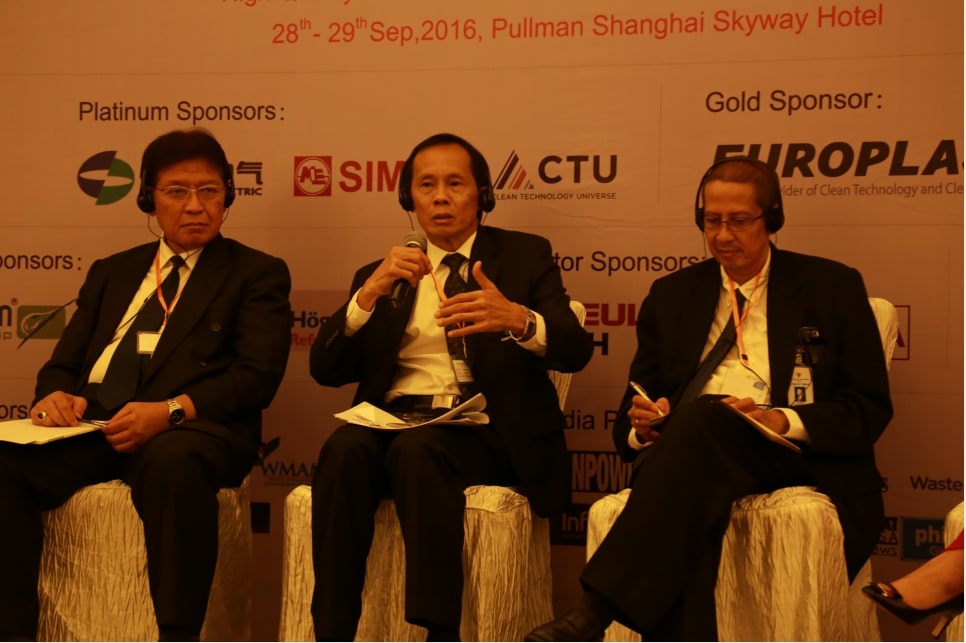| Asia Green Hydrogen & Ammonia Congress 2023 | | Event Background |
The global green hydrogen market was valued at US$2,018 million in 2022 and is projected to grow at a CAGR of 61.0% during the forecast period 2023-2033. global green hydrogen investments to exceed USD 700 million in 2023£¬is expected to hit over USD 89.18 billion by 2030,the world¡¯s hydrogen market will grow to generate over USD 2.5 trillion in revenue and over 30 million jobs by 2050.
The fastest-growing region is the Asia Pacific,China, Japan, India, South Korea, and the rest of Asia Pacific are all included in the Asia Pacific. By 2030, it is anticipated to grow by a CAGR of 55% to reach a value of USD 4805 million.Asia¡¯s electrolyser capacity is projected to reach 10GW over the coming decade£¬but this could still accelerate. Amidst increasing viability of the technology, government support and investor interests in several markets, substantial growth opportunities are abound for the green hydrogen sector in Asia Pacific over the coming years.
The race to establish green hydrogen production bases in the Asia-Pacific region is heating up, with Western and regional companies cooperating on massive projects to produce what many see as a next-generation power source.China, the world¡¯s largest hydrogen consumer, is aiming to take the lead in green hydrogen production.as Broaders'study,the planned green hydrogen and ammonia prject is already more than 300 billion RMB.In India, big projects are being planned one after another, taking advantage of its vast area, abundant sunlight, and low-cost renewable energy sources.
Australia and Mainland China are outperformers, scoring above other regional and global peers due to strong renewables sectors and pipeline of projects. Currently, Australia ranks first in Asia¡¯s Green Hydrogen.This reflects the low risks that the market has when developing green hydrogen production capabilities, supported by the renewables sector¡¯s diverse competitive landscape, low financial barriers, and limited legal risks for businesses.The pipeline of solar and wind power projects for Australia is also strengthening following the government¡¯s commitment toward a low-carbon energy transition and tying renewable power projects to hydrogen production. This includes plans for hydrogen production facilities, such as the AUD454mn Regional Hydrogen Hubs program, reviewing regulatory frameworks for hydrogen development, and the development of an industry standard of hydrogen production across Australia.
For the medium to long term, China will nudge past Australia¡¯s performance as support for green hydrogen in the market strengthens. In March 2022, the National Development and Reform Commission and the National Energy Administration announced the market¡¯s first long-term hydrogen plan for 2021-2035. This includes a target to produce 100,000 to 200,000 tonnes of green hydrogen by 2025. There are 22 provinces in China have announced various subsidy schemes and policy support for hydrogen, and 20 cities have announced plans to develop hydrogen clusters. The market¡¯s capital, Beijing, revealed intentions to offer CNY30mn (USD4.4mn) worth of subsidies for projects involved in advanced hydrogen production, storage and transportation, and hydrogen refuelling. Supporting future growth of green hydrogen production is its strongly growing renewables sector. China has the world¡¯s largest renewables sector, ending 2022 with a net installed renewables capacity of about 1,195GW, inclusive of hydropower. This will increase to 1,682GW in 2026 and then about 2,375GW in 2031, the latter of which is almost double that of its 2022¡¯s renewables capacity. Having such a large base to feed renewable electricity to the green hydrogen production industry will present rewards for developers in the sector. We are convinced this strong growth of renewables in China will be the main contributor to the market¡¯s strong performance to edge past Australia. China will be the region¡¯s largest hydrogen fuel cell vehicle market, as the economy is the first to introduce strong purchase and development incentives. This reflects the potential for a huge appetite for low-carbon hydrogen for future demand cases.China added the item "Development of Hydrogen Energy Facilities and Hydrogen Refuelling Stations" to its Government Work Report. The specified plans indicate 1,000 hydrogen refuelling stations will be installed by 2030. The "Made in China 2025" project, announced in 2014, also includes plans for developing China's hydrogen vehicle industry, including the supply of 2 million hydrogen vehicles by 2030.
One of the world's first to pursue a hydrogen-based future, Japan released its Strategic Roadmap for Hydrogen and Fuel Cells in 2014 and began forming framework hydrogen policies in 2017. At present, Japan has the most hydrogen refuelling stations in the world with over 140, and is planning to supply 800,000 hydrogen-electric cars and 1,200 hydrogen-electric buses and build 900 more hydrogen refuelling stations by 2030.
The Korean government's Hydrogen Economy Roadmap, announced last year, provides insight into Korea's noteworthy hydrogen aspirations. The three major plans are for the development of world-class technology in the area of hydrogen vehicles and fuel cells, the production and supply of hydrogen through existing petrochemical plants, and the installation of extractors in Korea's nationwide LNG supply networks to create a foundation for hydrogen supply. Hydrogen vehicle supply is scheduled to reach 80,000 by 2022 and 6.2 million by 2040, and over 2GW in household fuel cells will be supplied by 2040. Korea has advanced hydrogen vehicle and fuel cell technology, but its green (water electrolysis) hydrogen production technology needs improvement, rated at just 60% to 70% of the world's green hydrogen leaders. Making this improvement is critical for Korea¡¯s green hydrogen energy sector.
India: On January 4 2023, the Union Cabinet approved the National Green Hydrogen Mission with an outlay of about USD2.4bn. This follows the launch of its National Hydrogen Mission in August 2021 and its mandate for green hydrogen use for refinery and petroleum plants in February 2022. Close to 90% of this financing will be used for its Strategic Interventions for Green Hydrogen Transition (SIGHT) programme, while the rest for pilot projects, research and development, and other supporting work. The government aims to have this mission aid its ambitions to be energy independent by 2047 and carbon net-zero by 2070. This commitment to developing its green hydrogen production and trade capabilities will be essential in providing tailwinds to the private sector efforts in ramping up their green hydrogen projects. We highlight that major Indian companies, such as Adani Group, Reliance Industries, NTPC Limited, and GAIL Limited have announced plans for green hydrogen facilities and hubs.
Indonesia aims to reduce emissions by 29% by 2030 and achieving net-zero emissions by 2060. Indonesia has set forward a vision to utilize green hydrogen, ammonia and carbon capture and storage to reduce its carbon footprint (Hydrogen roadmap in preparation by the Ministry of Energy). It targets using green hydrogen as an alternative energy for the transportation, industrial and household sectors in the future.The Indonesian government is developing green hydrogen as a renewable energy source to achieve its carbon neutrality target by 2060
The government is currently preparing a national green hydrogen roadmap to increase capacity and investment.Indonesia's state-owned Pertamina is looking to renewable energy sources such as hydrogen to meet its target of adding 10GW of clean energy power generation capacity by 2026, in line with its green transition plan for 2050¡£The government of Indonesia is expecting to need private sector investments of $25.2 billion to develop green hydrogen from 2031 to 2060. Pertamina is investing $11 billion for green hydrogen, as part of its green energy target.
The Global Green Growth Institute (GGGI) is collaborating with Samsung and Hyundai on a $1.2 billion clean energy project in Indonesia to produce green hydrogen in the Sarulla Block, North Sumatra. The development of green hydrogen and green ammonia holds a significant role in Indonesia¡¯s Net Zero Emissions roadmap.Indonesia will also play a key role in green hydrogen production in Asia.
The Philippines¡¯ President, Ferdinand R. Marcos Jr., has given the country¡¯s Department of Energy (DOE) the green light to move forward with its plan to explore and develop the offshore wind potential as a source of clean and sustainable energy, and electricity for green hydrogen production.
The Department of Energy reported to the President that there are currently 42 approved offshore wind contracts with an indicated capacity of 31 GW, with a strong interest from the private sector, including developers from Denmark, Norway, and the UK.
The Philippines¡¯ DOE Secretary Raphael P.M. Lotilla said that, in addition to addressing the country¡¯s energy needs, electricity generated by offshore wind farms can be used to produce alternative fuels such as green hydrogen, which then may be converted into ammonia.
Kazakhstan has the opportunity to become one of the top green hydrogen exporting countries, said Kazakh Deputy Minister of Foreign Affairs Almas Aidarov in a recent interview with The Astana Times.
Thailand has pledged to achieve carbon neutrality by 2050 and net zero emission by 2065. Thailand is following in the footsteps of many Asian-Pacific countries like Kazakhstan, Singapore and Australia, in this huge multibillion-dollar gigawatt scale green hydrogen trend that will see large amounts of greenhouse gasses displaced from all over the two continents of Asia and Oceania.The three companies will begin collaborating on a comprehensive plan to establish large-scale, renewable-powered green hydrogen and derivatives production facilities in Thailand for local energy consumption and global market export purposes. The production target is estimated to be around 225,000 tons per annum of green hydrogen, the equivalent of 1.2 million tons of green ammonia. The initial estimated investment amounts to $7 billion.
Malaysia will experience strong growth of Renewable Energy (5.6% CAGR) with Hydrogen to complement RE as alternative energy carrier. Malaysia is developing the New Energy Policy which includes hydrogen as alternative fuel.
Singapore: On October 25 2022, Singapore announced its National Hydrogen Strategy which affirms the market¡¯s commitment to establishing a low-carbon hydrogen supply chain. By utilising its position as a key trading hub, Singapore plans to develop frameworks for the certification of low-carbon hydrogen imports. We believe that the hydrogen industry requires such a framework to boost investor and hydrogen offtaker confidence in the hydrogen market. Additionally, to accelerate hydrogen capabilities in Singapore, the government stated that it will commit SGD129mn (USD98mn) to hydrogen projects under the Low Carbon Energy Research Project (LCER).
Vietnam is well-positioned for green hydrogen production¡£
The National Energy Administration of China will further increase support for the green hydrogen industry,strengthen planning, organization and planning to enhance the strategic position of the green hydrogen industry£»Improve laws, regulations and policies to promote the development of the entire "green hydrogen" industry chain;Promote scientific and technological research and development vigorously, and carry out special support for "green hydrogen" production technology.The NDRC and NEA jointly issued the "Mid- and Long-Term Plan for the Development of the Hydrogen Energy Industry (2021-2035)". The hydrogen production capacity from renewable energy will reach 100,000 to 200,000 tons per year by 2025, which will become an important part of new hydrogen energy consumption.Hydrogen production from renewable energy will be widely used by 2030.Formulate and improve relevant policies on hydrogen energy management, standardize the construction and management procedures of hydrogen energy production, storage, transportation, and refueling, implement safety supervision responsibilities, and strengthen industrial development and investment guidance.It also proposes to study and explore the supporting electricity price policy for hydrogen production from renewable energy power generation, improve the market-oriented mechanism for hydrogen production from renewable energy, improve the energy storage price mechanism covering hydrogen energy storage, and explore the direct participation of hydrogen energy storage in electricity market transactions.Support the development of key carbon emission reduction fields such as clean energy through the establishment of carbon emission reduction support tools , the construction of hydrogen energy facilities has been included in the support scope of carbon emission reduction support tools.
Develop green credit, guide financial institutions vigorously to strengthen innovation,increase financial support for clean production industries such as the construction and operation of hydrogen energy facilities."Construction and operation of hydrogen energy utilization facilities" includes "clean hydrogen production, safe and efficient storage of hydrogen gas, hydrogen refueling stations, hydrogen fuel cell vehicles, hydrogen fuel cell power generation, hydrogen-doped natural gas and other technical settings and hydrogen energy applications", all of which are covered by the Included in the "Green Bond Supported Project Catalog (2021 Edition)".Strengthen the supervision and cultivation of the credit rating industry,optimize the supply of rating products.Through the research and formulation of the "Green Bond Credit Rating Standard", measures such as encouraging rating agencies to deploy environmental, social and governance (ESG) fields, increase credit rating support for the development of a green and low-carbon economy.The central government has decided to provide subsidies for the fuel cell industry chain in Beijing, Shanghai, and Guangdong urban agglomerations.During the four-year demonstration period, each urban agglomeration can receive up to 1.5 billion yuan (about 235 million U.S. dollars) in subsidies for the promotion and application of fuel cell vehicles and 200 million yuan in hydrogen energy supply subsidies. China plans to have 50,000 hydrogen fuel cell vehicles by 2025.It will promote the construction of hydrogen energy infrastructure, formulate quality and safety standards, and increase the number of large-scale hydrogen refueling stations with a daily refueling capacity greater than 1,000 kg.Promote the use of green hydrogen in energy storage, utilities, industry, aviation and marine.It will actively explore the demonstration application of hydrogen fuel cells in the fields of ships and aircraft, and promote the research and development of large-scale hydrogen-powered aircraft.Promote the low-carbon transformation of ammonia hydrogen production and synthetic methanol hydrogen production. Participate in the establishment of international standards for hydrogen energy with overseas partners actively , and explore the development of hydrogen energy trade with countries that jointly build the "Belt and Road". "
The implementation plan for the development of Beijing¡¯s hydrogen energy industry (2021-2025), cultivate 5-8 leading enterprises in the hydrogen energy industry chain with international influence, and the cumulative industrial scale of the Beijing-Tianjin-Hebei region has exceeded 50 billion yuan , reducing carbon emissions by 1 million tons before 2023 .In the field of transportation, promote flexible construction models such as hydrogen refueling stations and combined refueling and hydrogen refueling stations,strive to build 37 hydrogen refueling stations and promote 3,000 fuel cell vehicles;In the field of distributed energy supply, carry out hydrogen energy and renewable energy coupling demonstration projects in the Beijing-Tianjin-Hebei region,promote the demonstration application of distributed power supply/cogeneration in commercial centers, data centers, hospitals and other scenarios;Carry out breakthroughs in cutting-edge technologies such as green ammonia, liquid hydrogen, and solid-state hydrogen storage and supply, achieve key technological breakthroughs in the hydrogen energy industry chain such as proton exchange membranes and compressors, and comprehensively reduce terminal application costs by more than 30%.Before 2025, there will be a basis for large-scale promotion of the hydrogen energy industry, and the industrial system and supporting infrastructure will be relatively complete.Cultivate 10-15 leading enterprises in the industrial chain with international influence, form industrial clusters for key components and equipment manufacturing in the hydrogen energy industry, build 3-4 world-class industrial R&D and innovation platforms, and realize the cumulative hydrogen energy industry chain in the Beijing-Tianjin-Hebei region The industrial scale is more than 100 billion yuan, reducing carbon emissions by 2 million tons.In the field of transportation, explore the business model for the construction of larger-scale hydrogen refueling stations, strive to complete the construction of 37 new hydrogen refueling stations, and achieve a cumulative promotion of fuel cell vehicles exceeding 10,000; in the field of distributed energy supply, in the Beijing-Tianjin-Hebei area explore commercial models for power supply and heating supply in more application scenarios, build a "hydrogen into thousands of homes" smart energy demonstration community, and promote a cumulative installed capacity of distributed power generation systems of more than 10MW; build applications such as green ammonia, liquid hydrogen, and solid-state hydrogen storage and supply demonstration projects, the economic performance indicators have reached the international leading level.
According to the medium and long-term plan for the development of Shanghai¡¯s hydrogen energy industry (2022-2035), the overall industrial innovation capability will reach the domestic leading level, breakthroughs will be made in key technologies of the production, storage and transportation industry chain, and core technologies and technologies with independent ip rights will be achieved. The technological level has been improved greatly,the demonstration application of hydrogen energy in the transportation field has achieved remarkable results by 2025.Build about 70 various types of hydrogen refueling stations, cultivate 5-10 unicorn enterprises with international influence, build 3-5 world-class innovative R&D platforms, and the number of fuel cell vehicles exceeds 10,000. The scale of the hydrogen chain industry has exceeded 100 billion yuan, driving carbon dioxide emission reductions of 50,000 to 100,000 tons per year in the transportation field.The overall industrial development will reach the international leading level, and a R&D and innovation center leading the development of the national hydrogen energy industry, a manufacturing and testing center for key core equipment and parts will be built, a rich and diverse application ecology will be formed in the fields of transportation, energy, and industry. Overseas hydrogen energy import transportation terminal, layout hydrogen energy trade and trading center in East Asia, form a collaborative innovation ecology with the Yangtze River Delta region, and basically build a world-class hydrogen energy technology innovation highland, industrial development highland, and multiple demonstration and application highlands by 2035.
Guangzhou hydrogen energy industry development plan (2019-2030), build Guangzhou hydrogen energy hub initially, industrial agglomeration center and relatively complete hydrogen energy industry chain, form independent design and manufacturing capacity of hydrogen energy equipment, some hydrogen energy The core technology of the industry has made breakthroughs, initially realized large-scale application, established a testing and inspection environment, and a technology industry innovation service platform. The layout of hydrogen energy infrastructure and industrial supporting facilities are relatively complete, and a hydrogen energy operation center in the Guangdong-Hong Kong-Macao Greater Bay Area has been formed by 2025.Cultivate more than 100 hydrogen energy and fuel cell-related enterprises in Guangzhou, including 1-2 companies with an annual operating income exceeding 5 billion yuan.Fuel cell vehicles account for no less than 30% in public transportation and sanitation, and the commercialization and application of fuel cell passenger vehicles on a scale of 1,000 vehicles would been achieved.Fuel cell vehicles would been commercially applied in logistics, warehousing, ports and other fields.Hydrogen energy and fuel cells would been applied on a small scale in the fields of power and heatting, and been demonstrated in rail transit, ships, and aviation.Build 4 green hydrogen power comprehensive peak-shaving power stations, and build no less than 50 hydrogen refueling stations. The output value of the hydrogen energy industry is expected to exceed 60 billion yuan.By 2030, Guangzhou will build a hydrogen energy industry system integrating production, storage, transportation, trading, and application. Hydrogen energy, electricity, and heat will jointly support the supply of secondary energy.Build a hydrogen energy R&D and design center, equipment manufacturing center, inspection and testing center, market operation center, and international exchange center in the Greater Bay Area.Form a group of competitive enterprises in core components, stacks, system integration, testing and certification services, vehicle development and other links, and 1-2 internationally influential enterprises in each link.The cumulative installed capacity of fuel cell stationary power generation systems in the fields of energy storage, backup power, distributed energy, and combined cooling, heating and power generation is 50,000 sets, and the cumulative installed capacity of fuel cell power systems in the fields of automobiles, rail transit, ships, and aviation More than 100,000 sets.Build no less than 10 green hydrogen power comprehensive peak-shaving power stations, and build more than 100 hydrogen refueling stations. The output value of the hydrogen energy industry is expected to exceed 200 billion yuan.
Shenzhen's hydrogen energy industry development plan (2021-2025), by 2025, a relatively complete hydrogen energy industry development ecosystem will be formed, a source of hydrogen energy industry technology, an advanced manufacturing cluster highland, and a multi-scenario application demonstration base will be built to realize hydrogen energy commercial application, the scale of the hydrogen energy industry will reach 50 billion yuan.Establish three public service platforms for hydrogen energy standard research, testing and safe operation testing, promote the city to lead or participate in the formulation and revision of about 20 international and domestic standards in the field of hydrogen energy,build key laboratories, engineering research centers, enterprise technology centers and other innovations¡£ There are no less than 15 carriers, breakthroughs in a number of key core technologies, localization of some key materials and core components, and product performance reaching or approaching the international advanced level.Two hydrogen energy characteristic industrial parks with complete functions and strong leading role will be built.Realize the application demonstration of hydrogen energy in transportation, distributed power generation, cutting-edge emerging and cross-cutting fields, among which the number of demonstration fuel cell vehicles shall not be less than 1,000, and the construction of no less than 10 hydrogen refueling stations, distributed energy, combined heat and backup power supplies are no less than 100 sets, 1-3 hydrogen energy ships, and no less than 100 hydrogen energy UAV.Looking forward to 2035, the scale of the hydrogen energy industry will reach 200 billion yuan, forming a hydrogen energy industry system integrating hydrogen production, storage, transportation, processing, and use, and key technologies reaching the international advanced level. The proportion of hydrogen energy in terminal energy consumption significantly improved.
The Inner Mongolia Energy Bureau announced the overall goal of the "14th Five-Year Plan for Hydrogen Energy Development in the Inner Mongolia Autonomous Region": by 2025, a domestically leading industrial ecological cluster with integrated development of hydrogen energy production, storage, transportation and application will be initially formed, build important green hydrogen production and output base, the fuel cell heavy truck demonstration base, and the hydrogen energy equipment production and manufacturing base have become domestically leading and internationally renowned hydrogen energy industry development gathering places, creating a new business card of "Northern Xinjiang Green Hydrogen City" and helping the autonomous region's energy transition and upgrading of the industry.Leveraging the advantages of low cost of wind and solar hydrogen production and multiple hydrogen energy application scenarios, through technology introduction and industry leading enterprises, develop new energy hydrogen production, hydrogen energy equipment manufacturing, storage and transportation infrastructure, comprehensive application of hydrogen energy, and make breakthroughs in green hydrogen production , Integrated design and manufacturing technology of high-pressure gaseous hydrogen storage and liquid hydrogen storage and transportation equipment;Carry out more than 15 demonstration projects such as "multi-energy complementarity + hydrogen", "source network load storage + hydrogen", hydrogen energy supply capacity reaches 1.6 million tons/year, green hydrogen accounts for more than 30%, and hydrogen production costs are competitive;Arrange infrastructure construction such as hydrogen refueling stations in an orderly manner, and the number of hydrogen refueling stations (including joint construction stations) will reach 60; accelerate the promotion of replacement of medium and heavy mining trucks, carry out demonstrations of fuel cell vehicles in public transportation, sanitation and other fields, and promote a total of 5,000 fuel cell vehicles ; Explore the demonstration and application of green hydrogen in energy storage, smelting, distributed power generation, cogeneration and other fields, and create more than 10 hydrogen energy application demonstration projects;Cultivate or introduce more than 50 enterprises related to the hydrogen energy industry chain, including 5-10 leading enterprises with certain international competitiveness, and initially form a certain industrial cluster.Drive the total output value of the hydrogen energy industry to exceed 100 billion yuan.From 2024 to 2025, the development of the hydrogen energy industry will be accelerated.The production capacity of green hydrogen reaches 500,000 tons/year, cultivates and introduces 15-20 core enterprises related to hydrogen energy, builds 100 hydrogen refueling stations, promotes more than 10,000 fuel cell vehicles in total, and strives to achieve a total output value of hydrogen energy industry of 100 billion yuan .Inner Mongolia released the "Several Measures for Promoting the Development of the Fuel Cell Vehicle Industry in the Inner Mongolia Autonomous Region (Trial)" for comments, implementing all-round subsidies for the fuel cell industry.Inner Mongolia's "14th Five-Year Plan Suggestions" clearly pointed out that it will strengthen the green hydrogen economy, build wind-solar hydrogen storage industry clusters, jointly promote the construction of fuel cell vehicle demonstration city clusters, and develop large-scale energy storage technology towards industrialization. Inner Mongolia Autonomous Region Opinions of the General Office of the People's Government on promoting the high-quality development of the hydrogen energy industry.
The Liaoning Provincial Hydrogen Energy Industry Development Plan (2021-2025) proposes that by 2025, the province's hydrogen energy industry will achieve an output value of 60 billion yuan, gather more than 100 hydrogen energy industry-related enterprises, and cultivate about 10 with core competitiveness and influence well-known enterprises;The province has more than 2,000 fuel cell vehicles (including buses, passenger cars, heavy trucks, tractors, sanitation vehicles, etc.), more than 50 fuel cell ships, and more than 30 hydrogen refueling stations.
By 2035, there will be more than 50 internationally and domestically well-known leading enterprises in the hydrogen energy industry in the province, and the output value of the hydrogen energy industry will exceed 500 billion yuan;The core technologies in the fields of hydrogen production, hydrogen storage and transportation, and fuel cell stacks would reach the world's leading level;The province would have more than 150,000 fuel cell vehicles (including buses, passenger cars, heavy trucks, tractors, sanitation vehicles, etc.), more than 1,500 fuel cell ships, and more than 500 hydrogen refueling stations.
Shandong released the 2020-2030 hydrogen energy industry development plan. From 2023 to 2025, the hydrogen energy industry chain will be basically complete, and about 10 well-known enterprises with core competitiveness and influence will be cultivated. The production capacity of fuel cell engines will reach 50,000 units. The production capacity of complete vehicles will reach 20,000, breakthroughs will be achieved in fuel cell rail transit, port machinery, ships and distributed power generation equipment industries, and the total output value of the hydrogen energy industry will exceed 100 billion yuan.Core technologies such as fuel cell engines, key materials, components and power system integration are close to the international advanced level.The network of hydrogen production, hydrogen storage (transportation), hydrogen refueling and supporting facilities will be gradually improved, hydrogen energy will be quantitatively promoted in commercial vehicles, passenger vehicles, ships, distributed energy, energy storage and other application fields, and a total of 10,000 fuel cell vehicles will be promoted. A total of 100 hydrogen refueling stations would be built, and the application of hydrogen energy in power grid peak regulation and frequency modulation, wind power generation and hydrogen production has been gradually promoted.The "Shandong Province Hydrogen Energy Industry Development Project Action Plan" (hereinafter referred to as the "Plan") proposes that by 2030, the scale of the hydrogen energy industry will reach 500 billion yuan.
The medium and long-term development plan (2021-2035) of "Hydrogen Jilin" supports the construction of hydrogen refueling stations.A fixed subsidy of 5 million yuan will be given to compressors of newly built hydrogen refueling stations in the province with a 12-hour rated working capacity of more than 1,000 kilograms (including 1,000 kilograms); A fixed subsidy of 2 million yuan for those with a rated working capacity of more than 500 kg (including 500 kg) and less than 1,000 kg;A fixed subsidy of 3 million yuan will be given to the compressors of hydrogen refueling stations rebuilt (expanded) in the province with a 12-hour rated working capacity of more than 1,000 kilograms (including 1,000 kilograms); 1,000 kilograms will be given a fixed subsidy of 1 million yuan.Support the operation of hydrogen refueling stations.For hydrogen refueling stations that provide hydrogen refueling services within the province and the sales price of green hydrogen is not higher than 35 yuan per kilogram, a hydrogen operation subsidy of 15 yuan per kilogram will be given, with a maximum subsidy of 2 million yuan per year.Support green hydrogen production enterprises. For projects with an annual output of more than 100 tons (including 100 tons) of green hydrogen, the standard of 15 yuan per kilogram in the first year is used as the base, and the method of gradual decline is adopted (80% of the base in the second year, 80% of the base in the third year) 60%), providing subsidy support for 3 consecutive years, with a maximum subsidy of 5 million yuan per year.Support green hydrogen storage and transportation enterprises. For project subjects specializing in green hydrogen storage and other project subjects using green hydrogen storage devices, a one-time subsidy will be given to the project subject according to 20% of the investment in green hydrogen storage equipment, with a maximum subsidy of 5 million yuan.For project entities specializing in green hydrogen transportation, a subsidy of 1.5 yuan per kilogram will be given according to the actual annual cumulative hydrogen transportation volume, with a maximum subsidy of 1.5 million yuan.
Shaanxi Province's "14th Five-Year Plan" Hydrogen Energy Industry Development Plan By 2025, a policy and environment system for hydrogen energy development has been basically formed, hydrogen fuel cells have been developed and produced in the province, demonstration applications have achieved remarkable results, and a relatively complete supply chain and industrial system have been initially established .A number of 10,000-ton-class hydrogen plants for vehicles have been formed, about 100 hydrogen refueling stations have been built and put into operation, and about 10,000 fuel cell vehicles of various types will be promoted, and a number of renewable energy hydrogen production projects will be completed and put into operation. Green hydrogen equipment, hydrogen storage and transportation equipment, fuel cell vehicles and other link technologies have reached the domestic advanced level, hydrogen energy has been expanded and applied in the fields of metallurgy and chemical industry, and the scale of the entire industrial chain would reach more than 100 billion yuan.By 2030, the province will form a relatively complete hydrogen energy industry technology innovation system and green hydrogen production and supply system, and the large-scale application of hydrogen production from renewable energy.
The "Ningxia Hui Autonomous Region Hydrogen Energy Industry Development Plan" was issued. According to the "Plan", by 2025, a hydrogen energy supply system based on renewable energy hydrogen production will be initially established.The hydrogen production capacity of renewable energy will reach more than 80,000 tons, and strive to reduce carbon dioxide emissions by 1 million to 2 million tons.Build an industrial development pattern of "one key demonstration leading, multi-point complementary support", and build Ningdong into a national renewable energy hydrogen production coupling coal chemical industry demonstration zone, a western green hydrogen industry demonstration base and a hydrogen energy industry pioneer zone in Ningxia. Build Yinchuan, Shizuishan, Wuzhong and other supporting points for the hydrogen energy industry.In terms of financial support, it will focus on supporting the construction of green hydrogen production facilities, green hydrogen coupled with coal chemical industry, green hydrogen decarbonization, and the promotion and application of hydrogen energy transportation, etc., to help the hydrogen energy industry grow bigger and stronger.Ningxia supports the development of the hydrogen energy industry vigorously , issued the "Guiding Opinions on Accelerating the Development of the Hydrogen Energy Industry", planned and implemented a number of solar electrolysis water hydrogen production and comprehensive application demonstration projects, and gradually build a strong innovation ability, high level of industrialization, demonstration and application of the leading hydrogen energy industry system.In 2021, Ningdong Base was approved to become a member of the national hydrogen fuel cell vehicle Shanghai and Zhengzhou demonstration city clusters, and became the only development zone in Northwest China to obtain demonstration qualifications. It undertook the demonstration of clean and low-carbon hydrogen applications and the promotion of 500 hydrogen-powered heavy trucks , is currently promoting the construction of a low-carbon logistics system in the chemical industry park and the commercial operation of hydrogen energy transportation at a par.
The "Guiding Opinions of the General Office of the People's Government of Gansu Province on the Development of the Hydrogen Energy Industry" was released, proposing to build a hydrogen production and storage base with a renewable energy hydrogen production capacity of about 200,000 tons per year by 2025, and lay out the construction of "a corridor, Two demonstration areas, two bases".Realize the comprehensive development of multiple applications of hydrogen energy in the fields of industry, transportation, energy storage, and power generation. Hydrogen energy has a significant role in reducing carbon emissions in various industries, reducing carbon emissions by about 2 million tons per year. The output value reached 10 billion yuan.
The medium and long-term plan for the development of the hydrogen energy industry in Henan Province (2022-2035). By 2025, breakthroughs will be made in the key technologies and equipment manufacturing fields of the hydrogen energy industry, and the industrial chain will be basically completed. More than 100 companies related to the industrial chain£¬the output value exceeded 100 billion yuan.Give full play to the leading role of infrastructure, and build a batch of hydrogen refueling stations in a moderately advanced manner.The field of hydrogen energy application continues to expand, hydrogen energy substitution in the transportation field has begun to take shape, and more than 5,000 hydrogen fuel cell vehicles of various types have been promoted, the hydrogen supply capacity for vehicles has reached 30,000 tons/year, and the hydrogen terminal price has dropped below 30 yuan/kg , the proportion of green and low carbon has been continuously increased, and 3-5 green hydrogen demonstration projects would be built.The Zhengzhou-Bianluo-Pu Hydrogen Corridor has basically been completed, and the demonstration and application of the Zhengzhou fuel cell vehicle urban agglomeration has achieved remarkable results, and a national-level advanced manufacturing cluster for hydrogen energy has initially been established.
Hebei Province issued the "14th Five-Year Plan for the Development of Hydrogen Energy Industry in Hebei Province", Hebei plans to achieve an output value of 50 billion yuan by 2025;In terms of core technology, make breakthroughs in the integrated design and manufacturing technology of large-scale pure water and seawater electrolysis hydrogen production equipment, develop high-voltage vehicle-mounted hydrogen storage systems, develop key equipment for hydrogen production/refueling stations, make breakthroughs in core technologies, and master efficient and low-cost hydrogen production , hydrogen storage, hydrogen transportation and other key technologies, significantly reducing costs;In the field of commercial application, by 2025, a total of 100 hydrogen refueling stations will be built, the scale of fuel cell vehicles will reach 10,000, and the mixed transportation of hydrogen energy in transportation, energy storage, electricity, heat, steel, chemical industry, communications, and natural gas pipelines will be expanded. Promotion and application in other fields.
The medium and long-term plan for the development of the hydrogen energy industry in Shanxi Province (2022-2035), by 2025, initially establish a hydrogen energy supply system based on industrial by-product hydrogen and hydrogen production from renewable energy.The number of fuel cell vehicles would reach more than 10,000 (about 50,000 nationwide), and a number of hydrogen refueling stations would be deployed and built, leading the country in terms of application scale.The amount of hydrogen produced by renewable energy would increase significantly and become an important part of new hydrogen energy, which would strongly promote the reduction of carbon dioxide emissions.By 2030, the number of fuel cell vehicles will reach 50,000, and hydrogen production from renewable energy will be applied on a large scale in transportation, energy storage, industry and other fields, forming a hydrogen energy industry cluster with reasonable layout, complementary industries, and coordinated progress.By 2035, a leading domestic hydrogen energy industry cluster will be formed. The proportion of renewable energy hydrogen production in final energy consumption would increase significantly.
The medium and long-term plan for the development of the hydrogen energy industry in Shanxi Province (2022-2035), by 2025, initially establish a hydrogen energy supply system based on industrial by-product hydrogen and hydrogen production from renewable energy.The number of fuel cell vehicles would reach more than 10,000 (about 50,000 nationwide), and a number of hydrogen refueling stations would be deployed and built, leading the country in terms of application scale.The amount of hydrogen produced by renewable energy would increase significantly and become an important part of new hydrogen energy, which would strongly promote the reduction of carbon dioxide emissions.By 2030, the number of fuel cell vehicles will reach 50,000, and hydrogen production from renewable energy will be applied on a large scale in transportation, energy storage, industry and other fields, forming a hydrogen energy industry cluster with reasonable layout, complementary industries, and coordinated progress.By 2035, a leading domestic hydrogen energy industry cluster will be formed. The proportion of renewable energy hydrogen production in final energy consumption would increase significantly.
The "Fujian Provincial Hydrogen Energy Industry Development Action Plan (2022-2025)" proposes that by 2025, Fujian will cultivate 20 well-known enterprises with national influence, covering hydrogen energy production, storage, transportation, filling, fuel cells and applications and other fields, to achieve an output value of more than 50 billion yuan; the application scale of fuel cell vehicles in the province has reached 4,000, and strive to build more than 40 various types of hydrogen refueling stations.
The action plan for the development of the hydrogen fuel cell vehicle industry in Jiangsu Province aims to basically establish a complete hydrogen fuel cell vehicle industry system by 2025, strive for the province's vehicle output to exceed 10,000 vehicles, build more than 50 hydrogen refueling stations, and basically form a reasonable layout Hydrogen refueling network, the overall technical level of the industry is in line with the international level, and it has become an important source of innovation for the development of hydrogen fuel cell vehicles in the country.
Implementation Plan for Accelerating the Development of the Hydrogen Fuel Cell Vehicle Industry in Zhejiang Province By 2025, the industrial ecology will be basically formed, and there will be a group of leading enterprises with strong competitiveness in the industrial chain.Positive progress has been made in the research of core technologies such as basic materials and key components related to hydrogen fuel cells, reaching the domestic advanced level.The system of policies and regulations has been gradually improved. The industrial application of key areas has achieved remarkable results. Nearly 5,000 hydrogen fuel cell vehicles have been promoted and applied in the fields of public transportation, ports, and intercity logistics, and nearly 50 hydrogen refueling stations have been planned to be built.The construction of hydrogen refueling stations in Zhejiang Province is divided into three stages. The first stage (2022-2025) is the initial development stage. The construction of hydrogen refueling stations is planned according to the provincial policy documents. It is predicted that about 50-70 hydrogen refueling stations will be built in 2025;The second stage (2026-2035) is a stage of rapid development. It is predicted that 90-120 hydrogen refueling stations will be built in 2030, and 150-250 hydrogen refueling stations will be built in 2035; the third stage is the multi-network development stage (2036-2050 year), it is predicted that the number of hydrogen refueling stations in the province will be about 500-800 in 2050.
The Anhui Provincial Development and Reform Commission and the Anhui Provincial Energy Bureau jointly issued the "Medium and Long-Term Plan for the Development of Hydrogen Energy Industry in Anhui Province". In 2025, strive to achieve a fuel cell system production capacity of 10,000 units per year, fuel cell vehicle production capacity of 5,000 vehicles per year, 30 hydrogen refueling stations, and a total hydrogen energy industry output value of 50 billion yuan.By 2030, the production capacity of fuel cell systems will exceed 30,000 units/year, the production capacity of fuel cell vehicles will exceed 20,000 units/year, the number of hydrogen refueling stations will exceed 120, and the total output value of the hydrogen energy industry will reach 120 billion yuan.
The Hydrogen Energy Industry Development Plan of Hubei Province (2021-2035) supports the pilot project of hydrogen production by electrolysis of renewable energy, rewards new energy development indicators, and explores distributed renewable energy hydrogen production in the long run.In terms of hydrogen storage and transportation, equipment investment subsidies will be given to high-pressure hydrogen/liquid hydrogen storage and transportation companies.In terms of hydrogen refueling station construction, priority will be given to building 10 provincial-level hydrogen refueling comprehensive demonstration energy stations along the high-speed service areas of key expressway networks such as "Han Shi", "Han Yi" and "Wu Huang".Encourage the use of existing gas stations and gas stations to rebuild or expand hydrogen refueling facilities.Investment subsidies will be given to the first 50 hydrogen refueling stations according to the maximum standard of 2 million yuan per seat. Support the promotion and application of hydrogen energy vehicles, and reward city and state governments every year for the promotion and application of hydrogen fuel cell vehicles that have reached the annual incremental target.Select pilot routes around key cities to expand transportation applications, and build hydrogen fuel cell vehicle logistics cycle demonstration circles, urban agglomeration passenger corridors, and multi-port combined freight lines in the three major metropolitan areas. Promote the application in the fields of industry and power generation, actively promote the integration and development of hydrogen energy in metallurgy, building materials, chemical and other industrial fields, and support demonstrations such as combustion of gas mixed with hydrogen and hydrogen energy storage to participate in peak shaving.
The hydrogen energy industry development plan of Hunan Province, 2022-2025 will form a hydrogen source and fuel cell vehicle two-wheel drive, a comprehensive development pattern of more than 100 hydrogen energy industry-related enterprises, a breakthrough in hydrogen production from renewable energy, and hydrogen energy in construction machinery, demonstration applications in the fields of transportation, ports, and distributed power generation have been gradually promoted.Build 10 hydrogen refueling stations, promote the application of 500 hydrogen fuel cell vehicles, and gradually improve the hydrogen energy infrastructure. From 2026 to 2030, the name card of the capital of hydrogen energy construction machinery will basically be formed, and the hydrogen source base in the central region will take shape.The hydrogen energy technology innovation system has been gradually improved, and phased technological breakthroughs have been achieved in the fields of hydrogen production, hydrogen storage, and fuel cells. The demonstration application scenarios of hydrogen energy have been further expanded, and the demonstration application of "green hydrogen" in the industrial field has started. From 2031 to 2035, the hydrogen energy production, supply, storage and sales network will be basically completed, and the proportion of "green hydrogen" in terminal energy consumption will increase significantly.
Sichuan Hydrogen Energy Industry Development Plan (2021-2025) By 2025, the application scale of fuel cell vehicles (including heavy trucks, medium and light logistics vehicles, and buses) will reach 6,000 vehicles, and a hydrogen energy infrastructure supporting system will be initially established. 60 hydrogen stations; the field of hydrogen energy demonstration is further expanded to realize combined heat and power supply(including hydrogen energy power generation and distributed energy), rail transit, unmanned aerial vehicle and other fields demonstration applications, build 5 hydrogen energy distributed energy stations and backup power projects, and 2 hydrogen energy storage power stations.
The Chongqing Economic and Information Commission issued the "Guiding Opinions on the Development of the Hydrogen Fuel Cell Vehicle Industry in Chongqing." 2,000 vehicles; by 2030, the hydrogen fuel cell vehicle industry chain and value chain will be formed to radiate the surrounding areas, driving the energy transformation of the future society.
Guizhou Province's "14th Five-Year Plan" hydrogen energy industry development plan has a fuel cell engine system production capacity of 5,000 units (sets) per year, and a fuel cell vehicle production capacity of 5,000 units per year;The R&D and manufacturing level of core technology, basic materials and key components has reached the domestic leading level and is close to the international advanced level.Focus on making breakthroughs in real-time detection technology for hydrogen purity, commercialization technology for liquid hydrogen storage and transportation, and key technologies for hydrogen production from biomass.With coking by-product hydrogen as the core and renewable energy hydrogen production as the supplement, the total production capacity of hydrogen supply from various hydrogen sources exceeds 10,000 tons/year. The total investment scale of the hydrogen energy industry exceeds 10 billion yuan, and the annual output value of the industrial chain and related industries exceeds 20 billion yuan.Build 15 hydrogen refueling stations (oil, gas and hydrogen comprehensive energy stations); in the fields of logistics transportation, urban construction transportation, tourist passenger transportation and bus passenger transportation, demonstrate the operation of fuel cell heavy trucks, logistics vehicles, sanitation vehicles, buses, buses and special vehicles. 1,000 vehicles; layout and demonstration in the fields of hydrogen energy storage, fuel cell multi-energy cogeneration, backup power supply, green hydrogen chemical industry, green hydrogen metallurgy, natural gas hydrogenation, etc.; build a hydrogen transmission pipeline of 20km, and a fixed multi-energy cogeneration installed over 10MW.
The Hydrogen Energy Industry Development Plan of Yunnan Province (2020-2030) and the "14th Five-Year Plan" for the Development of Hydrogen Energy Industry in Guangxi (hereinafter referred to as the "Plan") passed the review.
Key Features
Gain latest policy on green hydrogen ammonia and fuel cell across the Asian countries
Understand the economics of green hydrogen ammonia and fuel cell in the region
Key projects update from the entire Asia
Learn what investors need to make a project bankable
Cost-effective scaling of green hydrogen production–technology innovations and efficiency
Debate challenge and opportunities with investors,funders and advisors
Assessing how green hydrogen ammonia and fuel cell markets are developing in the region
The latest advances in hydrogen mobility, and refueling networks being established in the region
Assess new technologies in green hydrogen ammonia and fuel cell indutry
Project green finance safety, risk, and regulations
Assess the market opportunities for advanced green hydrogen ammonia and fuel cell technologies and their outputs
Debate the future of the emerging green hydrogen ammonia and fuel cell market with industry leaders
Benefit from technical expertise insight from some of the industry’s leading technology providers
Take part in robust discussions and share best-practice with senior-level opinion-formers
Network and do business with the leading green hydrogen ammonia and fuel cell projects owners in the region
Discover new commercial opportunities in 2024 and beyond
Position your company at the forefront of the green hydrogen ammonia and fuel cell industry globally and Asia |























